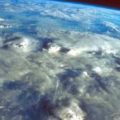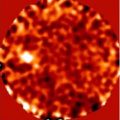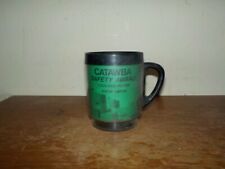
The idea of an optical telescope on the moon gets astronomers understandably excited. With no atmosphere to blur incoming light, a lunar telescope could capture razor sharp images at magnifications that would not be possible with terrestrial ‘scopes. But a major stumbling block – the cost of getting telescope construction materials to the moon – has derailed the idea in the past. Now, however, scientists as NASA may have stumbled upon a low-cost raw material to fabricate the telescope from – moon dust.
Peter Chen, at NASA’s Goddard center, says that to make a mirror that dwarfs anything on Earth, just take a little bit of carbon, throw in some epoxy, and add lots of lunar dust. “We could make huge telescopes on the moon relatively easily, and avoid the large expense of transporting a large mirror from Earth,” explains Chen. “Since most of the materials are already there in the form of dust, you don’t have to bring very much stuff with you, and that saves a ton of money.” Chen and his co-researchers presented their mirror-making technique in a session at the 212th meeting of the American Astronomical Society in St. Louis.
“After that, all we needed to do was coat the mirror blank with a small amount of aluminum, and voilà, we had a highly reflective telescope mirror,” said co-researcher Douglas Rabin. “Our method could be scaled-up on the moon, using the ubiquitous lunar dust, to create giant telescope mirrors up to 50 meters in diameter.” Such an observatory would dwarf the largest optical telescope currently operating, the 10.4-meter Gran Telescopio Canarias in the Canary Islands.
Chen says that with a lunar-based 50-meter telescope, astronomers could record the spectra of extrasolar planets and detect atmospheric biomarkers such as ozone and methane. More tantalizingly, two or more such telescopes operating in tandem could take direct images of Earth-like planets around nearby stars and look for brightness variations that come from oceans and continents.
Related:
Plenty Of Earth-Like Planets Out There, Say Astronomers
Polarization Technique Used To “See” Exoplanet
Exoplanet Imager Takes Shape Lunar Prospects Up In The Air


















Comments are closed.